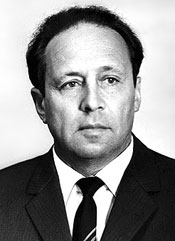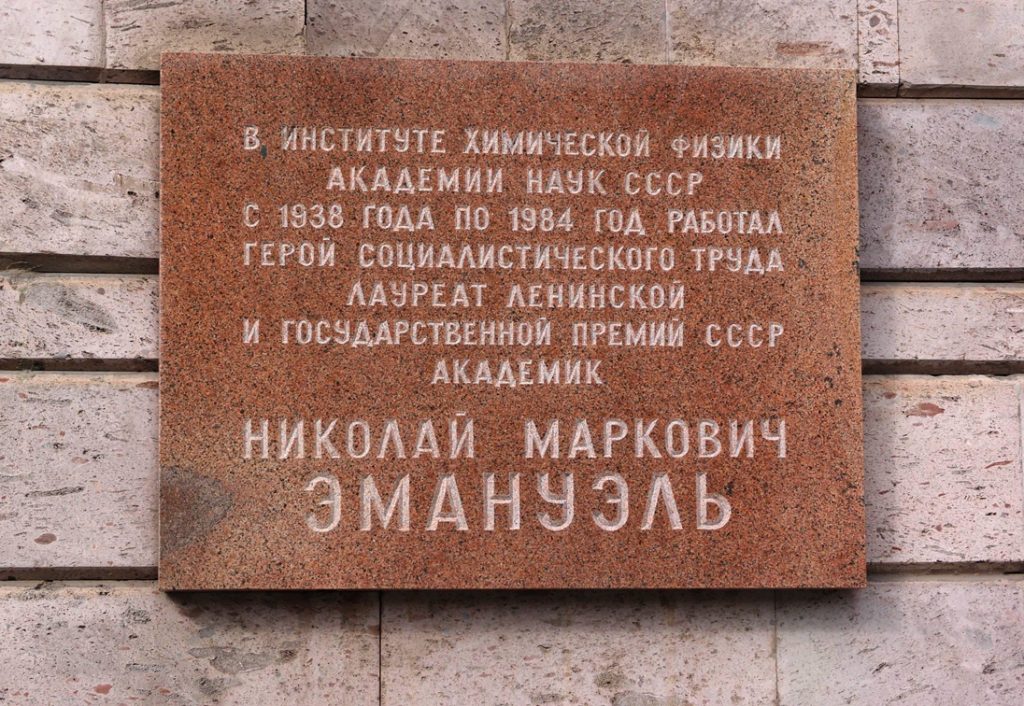Nikolai Markovich
Emanuel
1915-1984

Nikolay Markovich Emanuel was a scientist and organizer of research in the field of chemical physics, the Academician of the USSR Academy of Sciences, the Hero of Socialist Labor. He graduated from the Faculty of Physics and Mechanics of Leningrad Industrial (Polytechnic) Institute at the Department of Chemical Physics in 1938. He entered the postgraduate course of the Leningrad Institute of Chemical Physics in the same year. In 1941, immediately after the outbreak of the war, he was drafted into the Red Army. He participated in the battles on the outskirts of Leningrad. In November 1941, he was demobilized to participate in scientific work on defence topics and returned to the institute, which was in evacuation in Kazan. In 1942 he defended his PhD thesis and was left at the same institute where he worked until the end of his life. In 1944, the institute was transferred to Moscow. From the same year he taught at Moscow State University. In 1949 he defended his doctoral dissertation. Nikolay Markovich Emanuel and his collaborators developed problems of catalysis in liquid-phase oxidation reactions since the late 1940s. The entire cycle of these studies was awarded the A. N. Bach Prize in 1948. Since the mid-1950s, studies of the kinetics and mechanism of chain reactions of oxidation of organic substances in the liquid phase took an increasing place in the scientist’s works. Under his leadership, kinetic studies of the destruction and stabilization of polymers were carried out, new effective stabilizers were created. In 1958, for a series of studies of the properties and features of chain reactions, he was awarded the Lenin Prize and was elected a corresponding member of the USSR Academy of Sciences. Since the late 1950s, Emanuel’s laboratory worked in the field of kinetics of biological processes, in particular clinical oncology, assessments of the effectiveness of various antitumor drugs were obtained, drugs were developed that are successfully used in the treatment of cancer, radiation and trophic lesions of the skin and mucous membranes. He led a huge scientific and organizational work: from 1975 until the end of his life he headed the Department of General and Technical Chemistry of the USSR Academy of Sciences, being at the same time the editor-in-chief of several scientific journals, a member of the Committee on Lenin and State Prizes of the USSR in the field of science and technology under the Council of Ministers of the USSR, and also worked in 15 different scientific councils, committees and the commission of the Academy of Sciences and the Council of Ministers of the USSR on the most important research problems.
Address: Moscow, Kosygina str., 4

